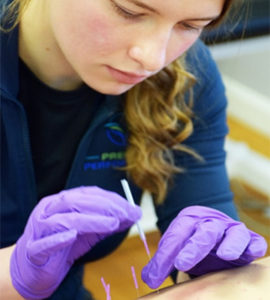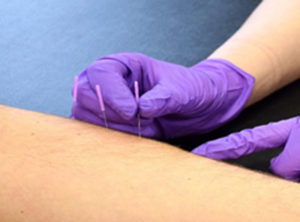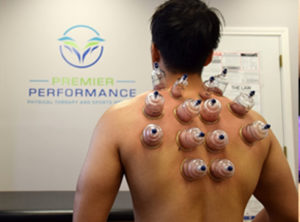Dry needling is an invasive technique using filament needles to create small lesions in soft tissues (muscles, tendons, ligaments) to facilitate a healing response. This helps mediate pain pathways and promote a return of balance in the body (homeostasis).The name “dry needling” comes from the fact that the needles are not hollow and are not used for injections and/or fluid transmission.
Dry needling uses a Western anatomical model to determine needle placement. Your therapist will target trigger points, myofascial points, or tight muscle bands to help improve muscle tone, promote local healing, and create an ideal environment for optimal muscle function.



